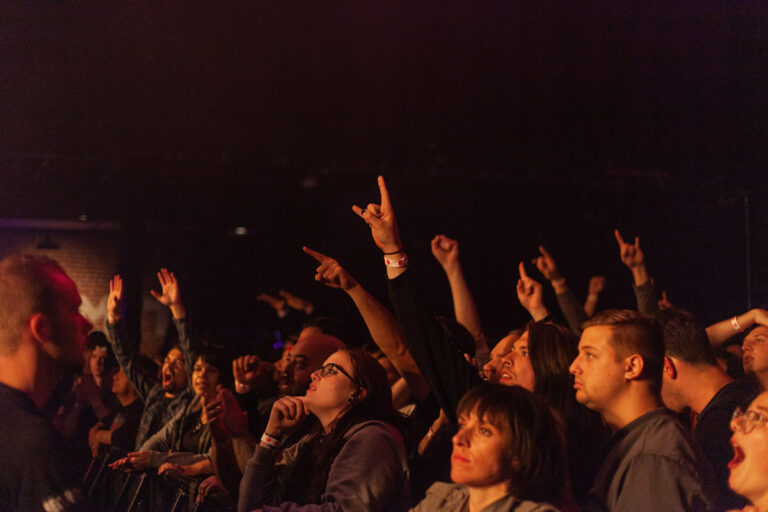What Is butt rock? Understanding this polarizing music genre

Over the past few months, we’ve dabbled into the terminology-ridden world of scam rap, the anarchist learnings of folk punk and the problematic alt-right realm of fashwave. Backed with unique purposes, all three music genres were hybrids spurred between various subcultures. But what if there was a genre out there that rips off the original musical movement only to produce indistinguishable soundtracks along the way? Introducing butt rock, an ironic music genre considered to be the butt of all rock jokes.
What is butt rock?
If you were to Google ‘butt rock’ and sift through a couple of search results, it would essentially land you in a loop—where you keep juggling between multiple tabs on your browser to nail down the static definition of the musical genre. An anecdote recounted in the Houston Press claims the term ‘butt rock’ to have been coined by fans after a radio station advertised its programme as being “Rock, Nothing But Rock.” Listeners then removed the first half of the slogan and rephrased it into “Nothing Butt Rock”—thereby birthing the genre.
On Wikipedia, the genre is synonyms with glam rock and post-grunge whereas entries on Urban Dictionary refer to butt rock as the subgenre of hard rock influenced by nu metal. Some entries here go as far as defining the genre with the use of tight leather pants which emphasises a wearer’s butt. Search results on Esty, meanwhile, revert back a bunch of rocks with butts painted on them—retailing for a whopping $16.
While all of this seems like loosely-stated yet plausible definitions, metaphors and imagery can be leveraged to break down the concept into perceivable chunks. In the case of butt rock, let’s take the human anatomy system into consideration and divide rock music as a whole into two: head rock and butt rock.
Now, head rock leads. It pioneers, innovates and engages the intellect. The lyrics here address a variety of themes while weaving together melodies, harmonies and rhythms. In sharp contrast, butt rock—like any other organ in our body—follows. It is more derivative than innovative. It can essentially be considered as the ‘excretion’ of what head rock had previously consumed and processed. The genre is considered to be bland and formulaic with no distinct sound or rhymes to set them apart.
One of the best comparative examples in the genre, according to Overthinking It, is Nirvana’s ‘Smells Like Teen Spirit’ and Creed’s ‘Higher’. The former is considered to be head rock for pioneering grunge and angsty palates that would “later be co-opted by pale butt rock imitators that follow.” ‘Higher’, in this case, is written off as butt rock “with no rhymes or harmonies whatsoever.”
This entire framework, however, is subjected to an individual’s perception—what’s innovative and original to one may be derivative and unoriginal to another. This is one of the major reasons why the genre lacks commonly agreed-upon definitions.
The ‘aggro machismo’ re-butt-al of rock music
Although the genre has no static definition, there are certain criteria that can be taken into consideration before labelling any arguable piece of rock music as butt rock. For starters, butt rock is primarily driven by power chords that focus less on complexity and more on radio-friendliness and the emotional impact it has on its listeners. It also features deep, raspy voices of artists—a characteristic which is said to mask the lack of musical talent in the genre.
Butt rock can be further classified into two: hard rock anthems designed to pump and rock the crowd in large arenas, and slow power ballads meant to attract female fans. However, the subject matters of the lyrics in both these classifications are deeply misogynistic—with women often portrayed as sex objects or home-wreckers.
Common themes in the subgenre’s power ballads surround love and drug abuse while hard rock anthems feature intense self-loathing coupled with ‘aggro machismo’. Playing with the broad concept of rebellion, authoritative figures like teachers, parents and police are often portrayed as factors who don’t understand their needs. The lyrics, in this case, tend to surround sex, violence, hedonism and other subjects which are considered ‘manly’.
The target demography of the genre is said to be blue-collar workers, typically men between the age of 18 and 45. They tend to have a fascination for light beers, big trucks and UFC fighters and might also be religious viewers of Monday Night Football. Women who listen to butt rock, on the other hand, are usually fans of Guns N’ Roses who are drawn to the genre by the “subconscious influence of corporate agenda.”
Visually, butt rock bands consist of men in their mid-30s—sporting eyeliners, Affliction t-shirts, barbed wire tattoos and mullets sprayed with several cans of hairspray. A typical fan is said to emulate this style coupled with personality traits of his own that are considered manly. A noteworthy mention here is the low-key usage of tight pants that accentuates a wearer’s butt. This factor is also said to have spurred the ‘cock rock’ genre.
Given all of its visuals, themes and criticisms, one thing to be kept in mind is how butt rock isn’t a label for ‘bad’ rock and neither is head rock synonymous with ‘good’ rock. Both the genres essentially play on the concept of what’s enjoyable versus detestable in mainstream media. And with listeners all across the world backed with their unique thoughts and opinions, it all merely depends on who you ask.




